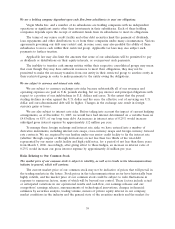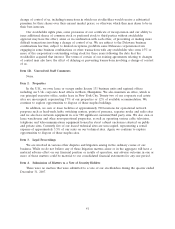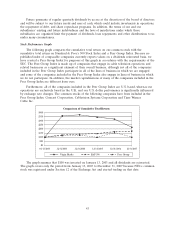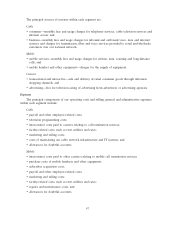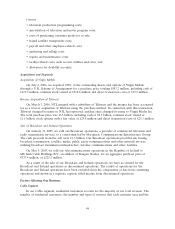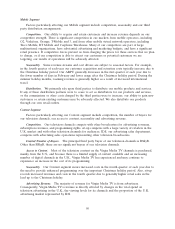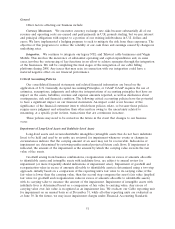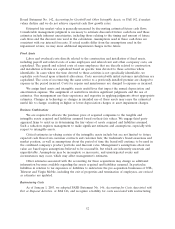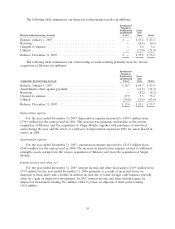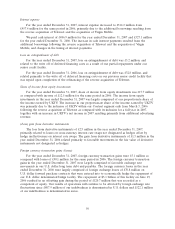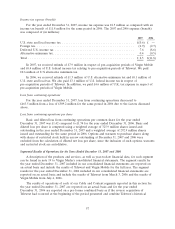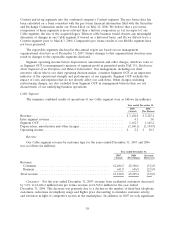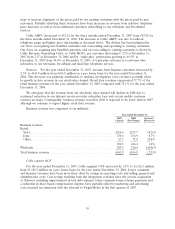Virgin Media 2007 Annual Report Download - page 51
Download and view the complete annual report
Please find page 51 of the 2007 Virgin Media annual report below. You can navigate through the pages in the report by either clicking on the pages listed below, or by using the keyword search tool below to find specific information within the annual report.prices we charge for these services drive our revenue. Our profit is driven by the relative margins on
the types of services we provide to these customers and by the number of services that we provide to
them. For example, broadband internet is more profitable than our television services and, on average,
our ‘‘triple-play’’ customers are more profitable than ‘‘double-play’’ or ‘‘single-play’’ customers. Our
packaging of services and our pricing are designed to encourage our customers to use multiple services
such as television, telephone and broadband at a lower price than each stand-alone product on a
combined basis. Factors particularly affecting our profitability include customer churn, average revenue
per user (ARPU), competition, capital expenditures and seasonality.
Customer Churn. Customer churn is a measure of the number of customers who stop subscribing
to our services. An increase in our customer churn can lead to increased costs and reduced revenue.
We continue to focus on improving our customer service and enhancing and expanding our service
offerings to existing customers in order to manage our customer churn rate. Our ability to reduce our
customer churn rate beyond a base level is limited by factors like competition and customers moving
outside our network service area, in particular during the summer season. Managing our customer
churn rate is a significant component of our business plan. Our customer churn rate may increase if
our customer service is seen as unsatisfactory, if we are unable to deliver our services over our network
without interruption, or if we fail to match offerings by our competitors.
Cable ARPU. Average Revenue Per User, or ARPU, is a measure we use to evaluate how
effectively we are realizing potential revenue from our residential cable customers on our network. We
believe that our ‘‘triple-play’’ cable offering of television, broadband and fixed line telephone services is
attractive to our existing customer base and generally allows us to increase our Cable ARPU by
facilitating the sale of multiple services to each customer. Cable ARPU excludes any recognition of
revenue from our Mobile segment.
Competition. Our ability to acquire and retain customers and increase revenue depends on our
competitive strength. There is significant and increasing competition in the market for our consumer
services, including broadband and telephone services offered by BT and resellers or local loop
unbundlers, such as BSkyB and Carphone Warehouse (Talk Talk), alternative internet access services
like DSL, satellite television services offered by BSkyB, digital terrestrial television offered through
Freeview, internet protocol television offered by Tiscali and BT, and mobile telephone services offered
by other mobile telephone operators. Our business services also face a range of competitors, including
BT and Cable & Wireless. Certain competitors, such as BT and BSkyB, are dominant in markets in
which we compete and may use their dominance in those markets to offer bundled services that
compete with our product offerings. As a result of increased competition, we have had to, and may be
required to continue to, adjust our pricing and offer discounts to new and existing customers in order
to attract and retain customers.
Capital Expenditures. Our business requires substantial capital expenditures on a continuing basis
for various purposes, including expanding, maintaining and upgrading our network, investing in new
customer acquisitions, and offering new services. If we do not continue to invest in our network and in
new technologies, our ability to retain and acquire customers may be hindered. Therefore, our liquidity
and the availability of cash to fund capital projects are important drivers of our revenue. When our
liquidity is restricted, so is our ability to meet our capital expenditure requirements.
Seasonality. Some revenue streams are subject to seasonal factors. For example, telephone usage
revenue by residential customers and businesses tends to be slightly lower during summer holiday
months. Our customer churn rates include persons who disconnect their service because of moves,
resulting in a seasonal increase in our churn rates during the summer months when higher levels of
U.K. house moves occur and students leave their accommodation between academic years.
49


